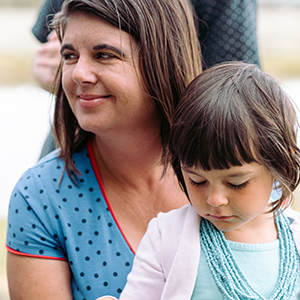
Crisis Self Care
Stress Management for Times of Crisis
BY gretchen heimsoth
 Pre-COVID, I had a borderline-religious health regimen. Along with varied exercise 4 to 6 times a week, I followed a plant-heavy, paleo-inspired diet, and did intermittent fasting. COVID hit and it smashed my routine. No spin class, no infrared sauna—my bodywork therapies went out the window.
Pre-COVID, I had a borderline-religious health regimen. Along with varied exercise 4 to 6 times a week, I followed a plant-heavy, paleo-inspired diet, and did intermittent fasting. COVID hit and it smashed my routine. No spin class, no infrared sauna—my bodywork therapies went out the window.
On top of that, the kids were home nonstop, with the stress of distance learning. I started eating late, my sleep patterns got smashed, I gained a little weight, and I started feeling slow and achy. I had to face the music and create more structure in my life. I felt the structure was not there and is hard to do naturally for this bit of a gypsy-souled, Libra Mama.
Structure, a very different structure, started to take shape. I carved out a new workout pattern; my eating got back in line; my kids had a day flow. Then August 18th, my son’s 4-year birthday, found us evacuating our Boulder Creek due to the CZU Lightning Complex Fire. The next few days saw us not only keeping vigil on the outcome of our town and neighborhood, but also amongst evacuees at hotels.
For the moment, my family of four, along with my mother-in-law and her 11-year-old yellow lab, Jake, have landed at a friend’s house. If I thought my structure was obliterated before, this was a whole new perspective I can say I wish I did not have.
This last week plus has helped me evaluate what can keep us steady and afloat in crisis. In times like these, it’s all about grace and basics. Grace is defined as ‘simple elegance or refinement of movement.’ For this reference, I think this is the best definition. It’s good to always strive for our best in life, and it is equally as good to recognize that our best changes from one moment to another. Our best in regular times will not be the same best in a crisis.
What simple movements and adjustments can you make for yourself right now, applying the concept of grace? You may feel completely powerless. I understand that. I go through moments right now feeling that way daily. For the rest of this piece, we will focus on identifying three pillars, mental health, breathwork, and discussing simple crisis eating guidelines.
Identify three pillars you can control right now. For me, it’s sleep, input, and basic movement. Sleep: I’m in one room with my whole family, and it feels like I have no control over my sleep. But I do: I limit caffeine in the afternoon, and evening blue light (screens), I have a sleep mask to block light, and I do my best to lay back and rest. I am falling back on melatonin right now so I can assure my rest.
Input: I’ve made a personal commitment to stay off politics for now. I have no capacity. The mess will be there, hot and ready, when I can pick that back up. Food and beverage input: as tempting as it is, alcohol is not our friend in times of stress. It wrecks sleep patterns, and the metabolites produced by its breakdown in our bodies don’t do our emotional spectrum or our physical bodies any help. Be selective if you imbibe. Now is not the time to lean on it. Focus on low sugar foods, whole foods anytime you can, and give your body lots of clean water to flush stress hormones.
Basic movement: walk or restorative yoga. Run if you feel up to it. For yoga, take advantage of all the YouTube tutorials. If you don’t have your mat, look for sand, grass or soft ground and improvise with a towel.
Mental health: if you need to talk to someone and have insurance, consider online platforms like TalkSpace. There is so much to process right now. Emeline has county resources as well. Be easy on yourself. So hard. It’s almost impossible for me. All things will feel harder. Thinking, errands, taking care of family, it will all feel bumpy. Don’t compare yourself to you a week ago. It’s not the same person. Escape to nature as much as you can—parks, beaches. Hit them up. Get some daily sun.
Breathwork: In times like these, we are in the sympathetic nervous system overdrive. Some simple hacks pull us out of that and into the parasympathetic system, which is the rest and restore mode. There are many tutorials online and many styles. Find what works for you. A quick and straightforward technique is to close your right nostril with your thumb and breathe in quickly, focus on deep belly breaths, for a count, pause, and slowly breathe out for a count longer than you breathed in. Cycle this for a minute to two minutes. You cannot breathe deeply and control and stay in the sympathetic nervous system. Sitting with your buttocks against a wall with your legs vertical also triggers blood pressure sensors that pull you back into the parasympathetic modes. Place a pillow under your tail to elevate above the heart. Stay in this position for 15/20 minutes. Binaural beats in your ears, look on YouTube again, will help you fall into relaxation faster.
These times will pass. Some of us will feel the effects of these fires longer than others. I need my community, and my community will need me. We will all need each other. #SCMStrong


You May Also Like

Kids’ Dentistry and Covid
January 28, 2021
Gilroy company pays for student lunches Where are the Santa Cruz companies?
February 12, 2019


